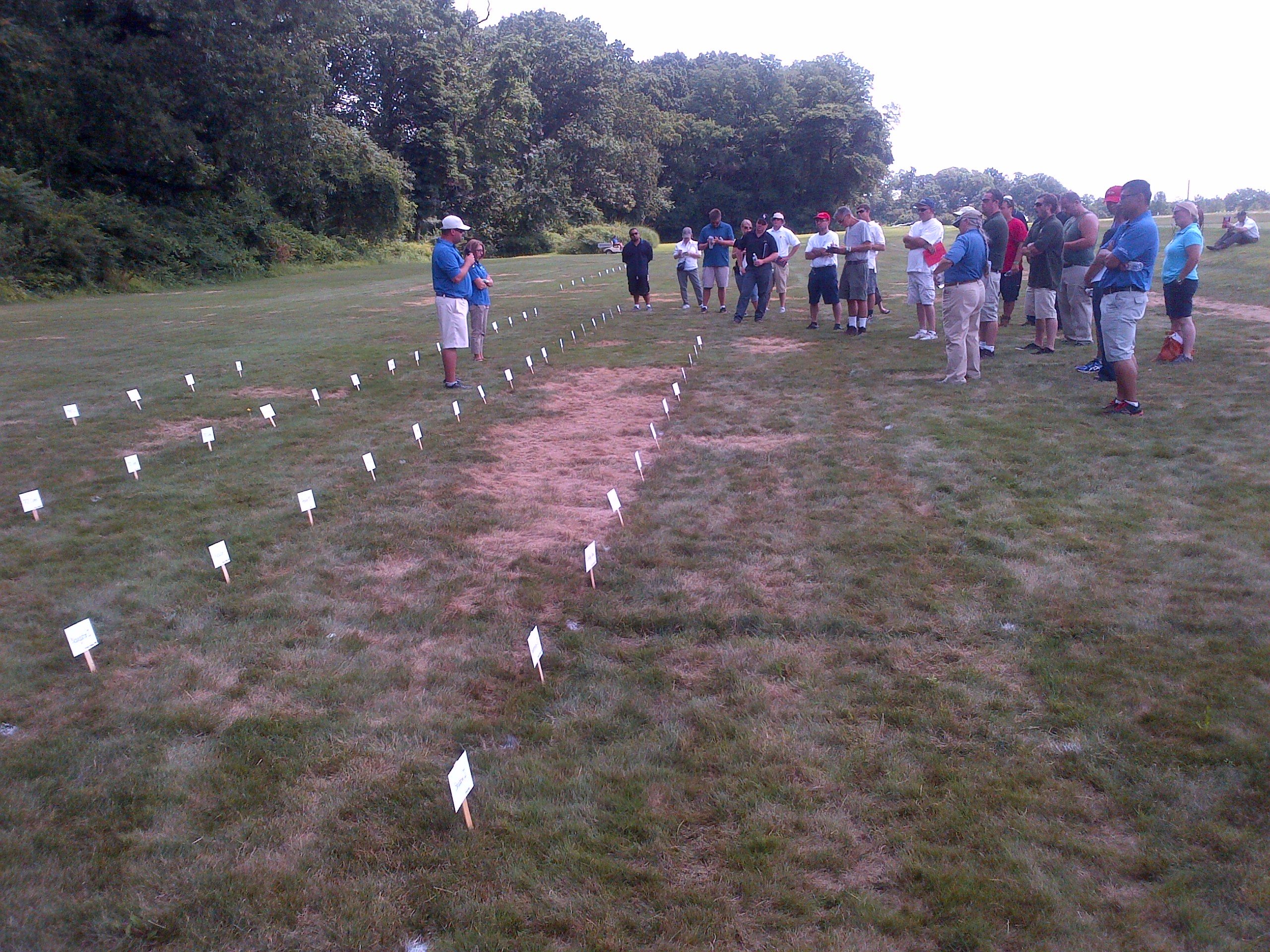By Jim Murphy

Severe summer patch disease on hard fesuce at
Hort Farm No. 2 in July 2013.
There are some cultural techniques that can reduce the severity of summer patch disease including:
- Fertilize at no more than 1 lbs. of N per 1,000 sq. ft. per application and 2 lbs. annually)
- Use an acidifying N source (for example, ammonium sulfate)
- Reduce soil compaction (aerify)
- Maintain a slightly acidic soil pH (around 6.0); do NOT lime until pH reaches mid to low 5′s and do NOT attempt to increase the soil pH much above 6.0
- Use seed mixtures (rather than blends) that include tolerant species when seeding hard fescue or Kentucky bluegrass as a major component of the turf. Hard fescue and Kentucky bluegrass (depends on the variety) are sensitive to summer patch.
- Seed with tolerant species which includes tall fescues, perennial ryegrass, and Chewings fescue. Chewings fescue can be damaged by summer patch disease but it is more tolerant than hard fescue as you can see in the image below.

A range of hard fescue entries in an evaluation trial that were severely damaged by summer patch disease. Disease stops at the plot edge with Chewings fescue (line defined by plot signs at field day).
Links below open PowerPoints on summer patch disease prepared by Dr. Bruce Clarke.
Getting to the Root of the Problem; Biology and Management of Patch Diseases
BMPs for the Control of Summer Patch on Annual Bluegrass Turf

